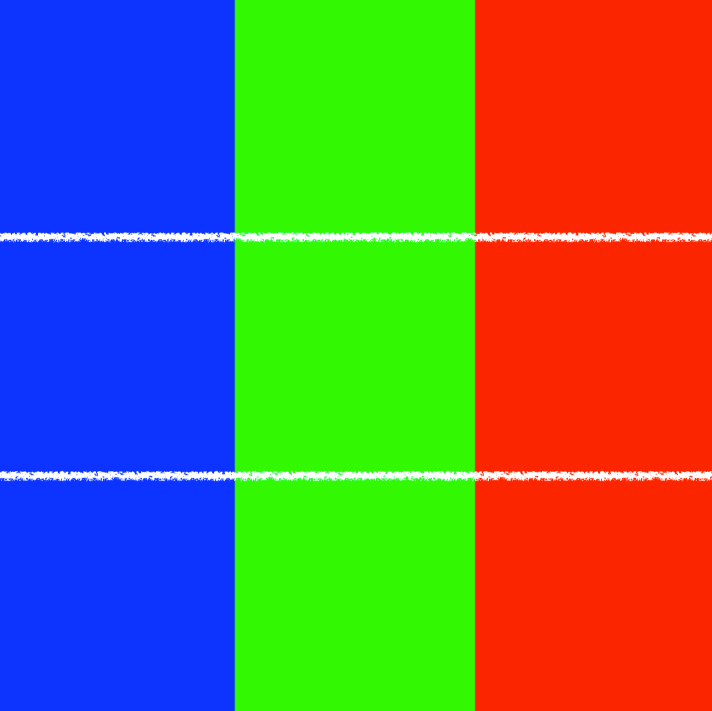Returning an image#
Previously, we defined a function for flip that does not have any return statement. Now, let’s consider another form for our function that does have a return statement.
def flip_left_right(img):
for y in range(len(img)):
for x in range(len(img[y])//2):
temp = img[y][x]
img[y][x] = img[y][len(img[y])-x-1]
img[y][len(img[y])-x-1] = temp
return img
In order to validate the code, let’s bring back the same example from Step 7 as our test.
rgb_square =[[(255,0,0),(0,255,0), (0,0,255)],
[(255,0,0),(0,255,0), (0,0,255)],
[(255,0,0),(0,255,0), (0,0,255)]]

In order to use rgb_square as our test sample to the flip_left_right function, we run the following lines. Now that our function has a return statement, we can assign the returned vaule to a new variable flipped.
flipped = flip_left_right(rgb_square)
Then, here is the output of rgb_square and flipped.
>>> rgb_square
[[(0, 0, 255), (0, 255, 0), (255, 0, 0)],
[(0, 0, 255), (0, 255, 0), (255, 0, 0)],
[(0, 0, 255), (0, 255, 0), (255, 0, 0)]]
>>> flipped
[[(0, 0, 255), (0, 255, 0), (255, 0, 0)],
[(0, 0, 255), (0, 255, 0), (255, 0, 0)],
[(0, 0, 255), (0, 255, 0), (255, 0, 0)]]

Thought experiment: how would you change flip_left_right so that it didn’t alter the input img at all?